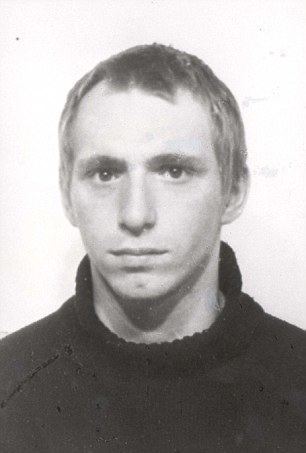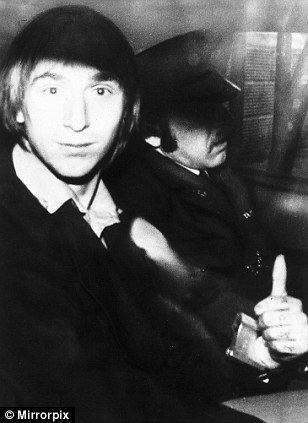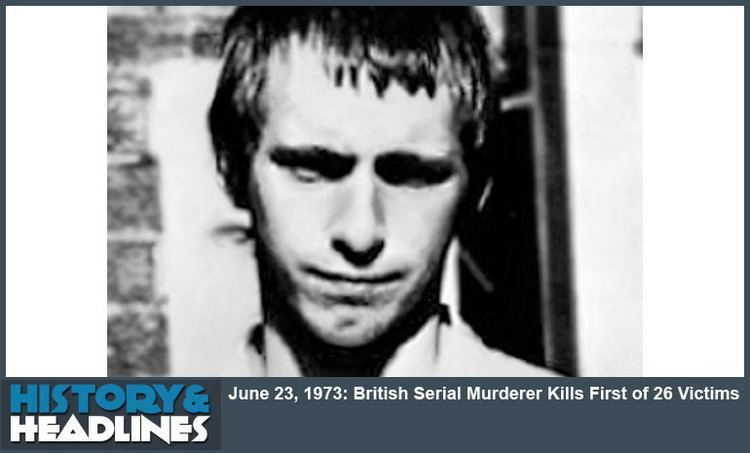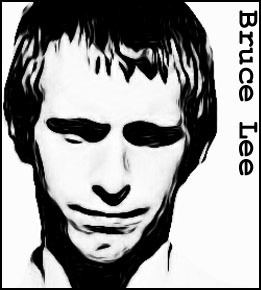Name Bruce Peter | Role Serial Killer | |
 | ||
Born 31 July 1960 (age 60) Manchester, England | ||
5 Insane Serial Arsonists
Bruce George Peter Lee (born Peter Dinsdale 31 July 1960) is one of Britain’s most prolific serial killers. He confessed to a total of 11 acts of arson, and was convicted of 26 counts of manslaughter. 11 of these were overturned on appeal. Lee was imprisoned for life in 1981.
Contents
- 5 Insane Serial Arsonists
- Early and personal life
- Selby Street fire
- Arrest and conviction
- Trial and sentence
- Aftermath
- References

Early and personal life

Born in Manchester, the son of a prostitute, Lee was brought up in children's homes and suffered from epilepsy and congenital spastic hemiplegia in his right limbs, which left him with a limp in his right leg and a compulsion to hold his right arm across his chest. As an adult, he worked as a labourer and was known locally as "daft Peter". In 1979, his mother remarried. His stepfather's surname was Lee, and Dinsdale changed his name as an homage to Bruce Lee.
Selby Street fire

On 4 December 1979, a fire broke out at the front of a house in Selby Street, Hull, East Riding of Yorkshire. Inside were Edith Hastie and her sons Thomas, Charles (both 15), Paul (12), and Peter (8). The family was asleep at the time.

Charles rescued his mother by pushing her out of an upstairs window. He could not help his brothers, Paul and Peter, who were in the same bedroom as he; opening the bedroom window had caused a draught which fed the fire. All three were trapped and burned severely, and were taken to the specialist burns unit in Pinderfields Hospital in Wakefield, West Yorkshire. Charles died overnight; Peter died two days later and Paul survived for 12 days before also succumbing. Thomas, who had muscular dystrophy, survived, escaping through a window in the back bedroom, where the flames were less severe. Mrs Hastie had three daughters, who were staying with relatives elsewhere in the area that particular night. Her husband, Tommy Hastie, was in prison.
The police set up a makeshift incident room in a former police station on Gordon Street and began talking to local people about the fire and the family. They were surprised and shocked by a rather casual response from the neighbourhood regarding the brothers, despite the severity of the fire which led to their deaths. The indifference of the neighbourhood came to a climax at the joint funeral for the boys in January 1980 when a grief-stricken Edith Hastie issued an outburst to the gathering crowd over their lack of sympathy for the loss of her sons. The two boys were buried together in one grave at the Northern Cemetery in Hull.
Once the police had established that the Hasties were known as a "problem" family, responsible for petty crime and vendettas, they began looking for an arsonist who may have been seeking a form of revenge. Lee was one of many teenagers who volunteered to be questioned routinely about the fire. Six months after the inquiry began, he confessed in great detail to pouring paraffin through the letterbox and setting it alight in revenge against Charles Hastie, with whom he had had some sexual contact. Lee said the 15-year-old boy had threatened to go to the police (as he was a minor) unless Lee gave him money. Lee had also become infatuated with Charles' sister Angeleena Hastie but she had rejected his repeated advances.
Arrest and conviction
On the night the fire at the Hasties' home was started, police received an anonymous telephone call, reporting three people driving away from the direction of the house in a Rover 2000 car. Detective Superintendent Ron Sagar and his investigators traced this car and decided to interview a number of suspects. Sagar accused each of them of starting the fire, hoping that the real killer would then confess.
Lee confessed to the Selby Street fire, saying "I didn't mean to kill them," and told the police how Charlie Hastie had demanded money from him for sexual activities. Moreover Lee had been ridiculed by members of the Hastie family for falling in love with daughter Angeleena Hastie. This was the reason Lee had set the fire at the back of the Hastie's house.
During further questioning — and to the complete surprise and horror of the police — Lee then went on to confess to starting nine more fatal fires in Hull over the previous seven years. None of the fires was treated with suspicion at the time; inquests recorded misadventure verdicts and Arson was never considered. A total of 26 people had died in the blazes, ranging from a six-month-old baby, a young mother and her three small sons, to 11 elderly men in a residential home, Wensley Lodge. Dozens more were burned or suffered from smoke inhalation, or received injuries while escaping.
Lee claimed that most of the fires were started at random because he loved fire, and he rarely considered whether he was endangering life when he started them. Only the Hastie fire and two others were at houses owned by people he knew and against whom he bore a grudge.
Investigating officers then proceeded to drive Lee around the city of Hull to the locations he had specified, whereupon Lee then pointed out the buildings in question. Although Lee could not be particular with dates or chronology, research later showed that fires had indeed been started at each of the dwellings he had indicated. Lee said that when he heard of many of the deaths he had caused, he sought solace in the Bible but was not persuaded to stop or confess.
To test Lee's story and rule out any prospect that he was merely a well-informed fantasist, officers deliberately took him to a dwelling where a high-profile fire had occurred but a criminal conviction had already been secured. Lee immediately ruled out his involvement — he said he had never been anywhere near the area — leading police to believe that he was being truthful about the number of fires he had started.
Despite initially saying he was not sorry for the deaths he caused, as killing was not on his mind when he began the majority of the fires, Lee later offered apologies for his actions while awaiting trial.
Trial and sentence
On 20 January 1981, Lee pleaded not guilty at Leeds Crown Court to 26 counts of murder, but guilty to 26 counts of Manslaughter on the grounds of diminished responsibility, and to 11 counts of arson.
Lee was initially taken to Park Lane Special Hospital in Liverpool and was later transferred to Rampton Secure Hospital. Although he was the most prolific killer in the UK at the time, he received relatively little national publicity, possibly because he was convicted of manslaughter rather than murder, and also because the trial of Peter Sutcliffe, which was a much more high-profile case, was ongoing at the same time.
In 1983, a public inquiry concluded that the fire at the Wensley Lodge was accidental and that Lee was not responsible for it or the deaths of the eleven residents. Senior fire investigation officers supported the inquiry's conclusions. Lee's eleven relevant manslaughter Conviction(s) were later duly quashed on appeal.
Aftermath
Sagar, the detective in charge of Lee's case, later launched a libel action against The Sunday Times after it published articles suggesting Lee's statements had not been entirely voluntary. The judge at Lee's 1983 appeal stated that he was confident that Lee's statements were "freely given" and the paper later withdrew the allegations and offered an apology, with the case finally settling out of court in 1987. Sagar, who had retired and was made an MBE, had stated that he hoped Lee will one day be deemed fit and safe enough to be freed. Sagar died in March 2010.
